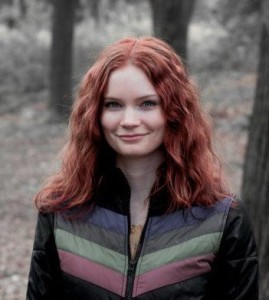Cabin Fever, by Jonathan Franklin and Michael Smith: I suppose I may get tired of reading about COVID at some point, but I doubt it…this nonfiction book benefits from its focus on a limited set of people in a singular location – the occupants of the Zaandam cruise ship. The authors focus on crew, officers, and passengers; it’s harrowing to see the pressure the crew feels to continue to “perform” for the passengers, and the severity of the situation is a stark reminder of what things were like at the beginning of the pandemic.
Nightcrawling, by Leila Mottley: This was hard to read because I was so gutted for the character. The narration felt slightly uneven, as if it were shifting in and out of the protagonist’s view and a wider one yet always in first person. I only just found out that the author is TWENTY-ONE, which means she wrote this when she was probably still a teenager, and now I’m extremely impressed. I’ll be interested in seeing what she writes next.
A Tale for the Time Being, by Ruth Ozeki: Utterly delightful exploration told through an instantly intriguing premise – a diary washes up on the shore of a small Pacific Northwest island and the writer who finds it and realizes it belonged to a young woman living in Northern Japan just before the tsunami and Fukushima disaster.
The Wave, by Susan Casey: I don’t know if reading about the tsunami subconsciously made me seek out this nonfiction work about waves, but it’s what I read next. The book focuses mostly on surfing, albeit with detours into tsunamis, rogue waves, and wave science, and I wished for a bit more exploration of all things wave-related, even as I marveled at the bravery and recklessness of big-wave surfers.
The Idiot, by Elif Batuman: I reread this in preparation for reading Either/Or, and I managed not to dwell too heavily on how many names and plot points I’d forgotten from what’s been one of my favorite books of the past decade. Everything that I did remember still worked perfectly – I’m sure many, many readers identify with Selin, but I can’t help feeling that her experiences and mine overlap more than most – the dialogue, the sense of confusion, the structure. Everything I didn’t remember was a new joy to rediscover.
Either/Or, by Elif Batuman: Based on the way the parts and chapters are set up (similarly to The Idiot), I am hopeful that Batuman will write a novel for each of Selin’s undergraduate years. I would spend as much time in her mind as she’s able to give. While The Idiot still wins for me as far as resonance with the awkward college experience, this was equally excellent.
Catch and Kill, by Ronan Farrow: Reading this was much like reading Lawrence Wright’s Scientology tome, Going Clear, in that it gave me a crawling paranoia and made me fear for the author. For Wright, though, I feared for retribution from the Church of Scientology, while fear for Ronan Farrow’s safety is a plot point of the book (and, it seems, the danger ended with the jailing of Harvey Weinstein). Incredibly compelling and horrifying.
Valedictorians at the Gate, by Becky Munsterer Sabky: I read this at the recommendation of one of my student’s parents; there’s very little I disagree with in what Sabky says about college admissions (in particular that all of us would be better off if we considered overall fit rather than pure prestige and acknowledged that there are MANY fantastic colleges). It’s always fun to look behind the curtain, and college admissions committees are rarely described in this level of detail.



